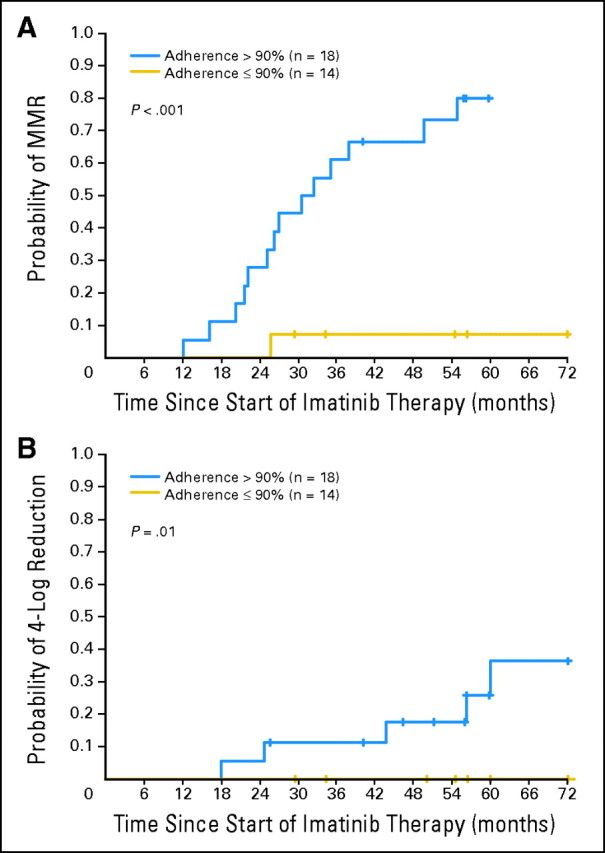Fig 2.

Six-year probability of major molecular response (MMR) and 4-log reduction in the transcript level in the 32 patients who had their dose of imatinib increased according to the measured adherence rate. Higher adherence rates were associated with achievement of MMR (relative risk [RR], 1.105; P = .008) and 4-log reduction (RR, 1.095; P = .026). Only three patients receiving imatinib 600 mg achieved complete molecular response (CMR), so we did not perform an analysis for this outcome. The 14 patients with an adherence rate ≤ 90% had a lower 6-year probability of MMR and 4-log reduction in transcript levels than the 18 patients with greater than 90% adherence (7.1% v 80% [P = .002] and 0% v 36.3% [P = .01]). Similar results were achieved when we considered other cutoff points for the adherence rate. The 6-year probabilities of MMR were 18.6% for the 17 patients with an adherence rate ≤ 95% versus 88.2% for the 15 patients with a rate greater than 95% (P < .001); 9.1% for the 11 patients with an adherence rate ≤ 85% versus 67.9% for the 21 patients with a rate greater than 85% (P = .006); and 0% for the seven patients with an adherence rate ≤ 80% versus 60.7% for the 25 patients with a rate greater than 80% (P = .02).
